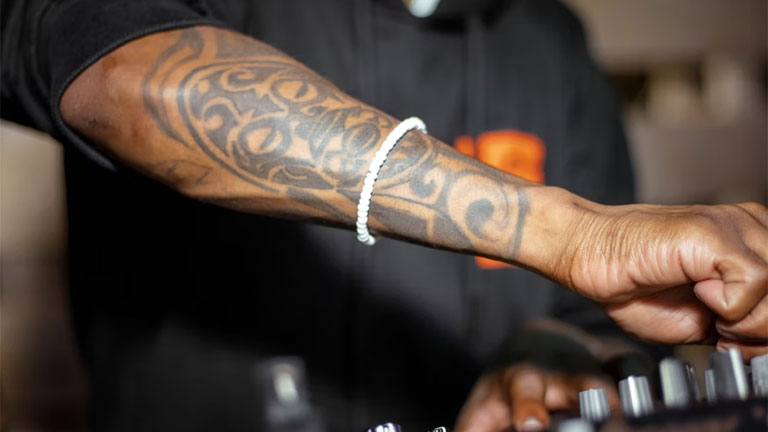If you live in a climate with seasonal changes, then you know how hard winter can be on your skin and nails. With freezing temperatures outside, dry heat indoors, and hectic schedules revolving around the holidays, something like nail care usually falls toward the bottom of the priority list. By adopting some simple nail care habits, and making just a few small changes during the colder months, you can keep your nails healthy and happy year-round!
Healthy Nail Structure
To properly care for your nails, a basic understanding of the nail plate anatomy is helpful. Your nails are formed in the nail matrix, which lies at the base of your nail plate, under the skin. A healthy nail matrix creates nail cells and pushes them outward, making your nails grow. The nail plate is the actual part of the nail that is exposed and is polished. The C-curve is the curvature of your nail plate from left-to-right. Some people have flat nails, while others have tighter C-curves. The eponychium is the flap of tissue that creates a seal around the edge of your nail with the skin, preventing bacteria and debris from getting into your nail matrix. The hyponychium is the seal underneath the free edge of your nail plate. The eponychium and hyponychium should not be cut or aggressively pushed during a manicure to prevent infection. The true cuticle is the sticky, white film that grows on your nail plate. This can be removed through regular manicures.
Common Cold Weather Problems
Many people complain of having more issues with their nails in the winter. Even people who generally have healthy nails that they are happy with may find their normally beautiful nails deteriorating in the colder months. Common cold weather nail problems include:
- Peeling at the free edge
- Brittle or breaking nails
- Ridges or cracks
- Tight c-curves
- Dry skin on hands
- Rough or ragged cuticles
- Hangnails
Many of these issues are due to a moisture imbalance caused by the changes in weather in the winter and the habits that tend to come along with this busy season. In this article, we will discuss a variety of techniques and products that can be used to help attain and nurture healthy nails, even in the coldest of climates!
Moisturizing Products
While regular manicures, either at home or the salon, may be enough to maintain beautiful nails for some, in colder weather, daily maintenance will be required to keep your nails looking fresh and healthy. Luckily, this daily maintenance is simple and just requires that you keep your hands and nails moisturized. Nails with a proper moisture-balance (oil and water levels) are less brittle and often grow quicker and healthier due to the nail matrix being properly nourished. Oils that penetrate the nail plate act as a shock absorber between the layers of keratin in your nail, creating a more flexible, life-friendly nail that can grow longer without breaking.
Dehydrated nail plates may have a tighter C-curve as well, which can be unsightly and slightly uncomfortable if the fingertip is pinched.
You can easily integrate moisturizing into habits you most likely already have in your day. Apply a cuticle balm while you read your morning newspaper or massage in some hand cream after washing your hands at work. I always suggest a cuticle balm or oil that contains jojoba oil, which can easily penetrate the nail plate and skin. Hand creams that contain shea butter and coconut oil are fabulous and add a bit of luxury to your routine.
The Winter Manicure
If you are performing DIY manicures at home, there are a few products you may want to limit or leave-out of your treatments when the weather is cold. If you are not experiencing any nail changes due to the seasons, then keep doing what works for you, but these products could cause dehydration and brittleness if overused. When using these products, anytime of year, you should follow the manufacturer’s instructions and always replenish the moisture balance with a high quality cuticle oil or balm after use.
- Acetone. While acetone is a strong solvent that quickly removes nail polish, it can be drying to the skin and nails if overused. Try a nail polish remover that is acetone-based, but also includes moisturizers.
- Nail strengtheners. Some nail strengtheners contain formaldehyde, which can cause brittle nails if used excessively. Luckily, there are many formaldehyde-free brush-on strengtheners available.
- Nail dehydrators. Brush-on dehydrators are commonly used in soak-off gel manicures and the application of acrylic nail enhancements. While these are fine to use for a bi-weekly gel service, you should limit your use in the already cold, dry months.
- Cuticle removers. Cuticle removers can be harsh so that they properly do their job. Limit their use to once every week or two.
While performing a manicure, there are a few other things you can do to help your nails while they are fighting the uphill winter battle. Aside from lots of cuticle oil and hand cream, try the following:
When shaping your nails, use a high-grit file appropriate for natural nails and only file in one direction at a time. This will minimize the trauma to your free-edge and can help with peeling nails.
- Do not soak your nails in water before pushing your cuticles back. Excessive water exposure can cause your nails to change shape and weaken (think about how your nails look after you do a huge sink-full of dishes without wearing gloves!), so it should be avoided.
- Carefully use cuticle nippers or small nail clippers to cut hang nails instead of tearing them out. By nipping them close to the base, you will limit the trauma to the skin or nail plate and help prevent infection.
While it may seem overwhelming to keep your nails in beautiful shape during the busy, cold winter season, by adopting just a few of the techniques discussed here, you will see a difference in your nails in a few short weeks!





